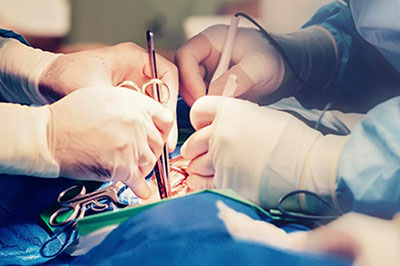
Overview
What is Minimally Invasive Heart Surgery?
It involves making small incisions in to reach the heart rather than cutting through the breastbone, as is done in open-heart surgery. Minimally invasive heart surgery can be done to treat a variety of heart conditions.
Who is a candidate for minimally invasive bypass surgery?
Minimally invasive coronary bypass surgery is not an option for all patients. Your doctor would evaluate and let you know if you could have minimal access surgery.
Can bypass surgery be done minimally invasive?
A 3 to 5 inch (8 to 13 cm) incision is made in the left part of the chest between the ribs. This incision is much less traumatic than the traditional heart bypass surgery incision which separates the breast bone. Minimally invasive heart bypass surgery allows a faster recovery.
Which other heart surgeries could be done by minimal access?
Many types of heart procedures may be performed with minimally invasive heart surgery, including:
- Aortic valve replacement
- Atrial septal defect and patent foramen ovale closure
- Coronary artery bypass surgery
- Mitral valve repair or replacement
- Tricuspid valve repair or replacement
Advantages
Advantages of minimal access surgery?
The potential benefits of minimally invasive heart surgery include:
- Less blood loss
- Lower risk of infection
- Reduced trauma and pain
- Shorter time in the hospital, faster recovery and quicker return to normal activities
- Smaller, less noticeable scars
To determine whether minimally invasive heart surgery is the best option, your doctor will likely review your medical history and order tests to get more information about your heart health.
Minimally invasive heart surgery is a complex surgical procedure that requires training and experience. You might be referred to a surgeons and a surgical team who have the needed expertise in performing minimally invasive procedures.
Thoracoscopic Surgery
In thoracoscopic surgery your surgeon inserts a long, thin tube (thoracoscope) containing a tiny video camera into a small incision in your chest.
Your surgeon repairs your heart using long instruments inserted through small incisions between your ribs.
You'll generally spend a day or so in the intensive care unit (ICU). You would be put on ventilator after surgery and the ventilator would be removed once you are breating well.
You'll be given fluids and medications through intravenous (IV) lines.
Other tubes placed during surgery will drain urine from your bladder and fluid and blood from your chest. You might be given oxygen through a face mask or prongs in your nose.
After the ICU, you'll be moved to a regular hospital room for several days. The time you spend in the ICU and hospital will depend on your condition and surgery.
Your treatment team will:
Monitor your condition and watch for signs of infection in your incision sites.
Monitor your blood pressure, breathing and heart rate.
Work with you to manage pain.
Get you up and walking and instruct you to gradually increase your activity.
Show you how to do deep-breathing exercises and instruct you to cough to keep your lungs clear.
Your doctor will give you instructions to follow during your recovery, such as watching for signs of infection, caring for your incisions, taking medications and managing pain.
Your doctor will tell you when you can return to daily activities, such as working, driving and exercise.
Important Links: Best Heart Surgeon in Prabhadevi | Best Bypass Surgeon In Prabhadevi | Best Cardiologist In Prabhadevi | Best Tavi in Prabhadevi | Best Angioplasty in Prabhadevi | Best Transplant Doctor in Prabhadevi
